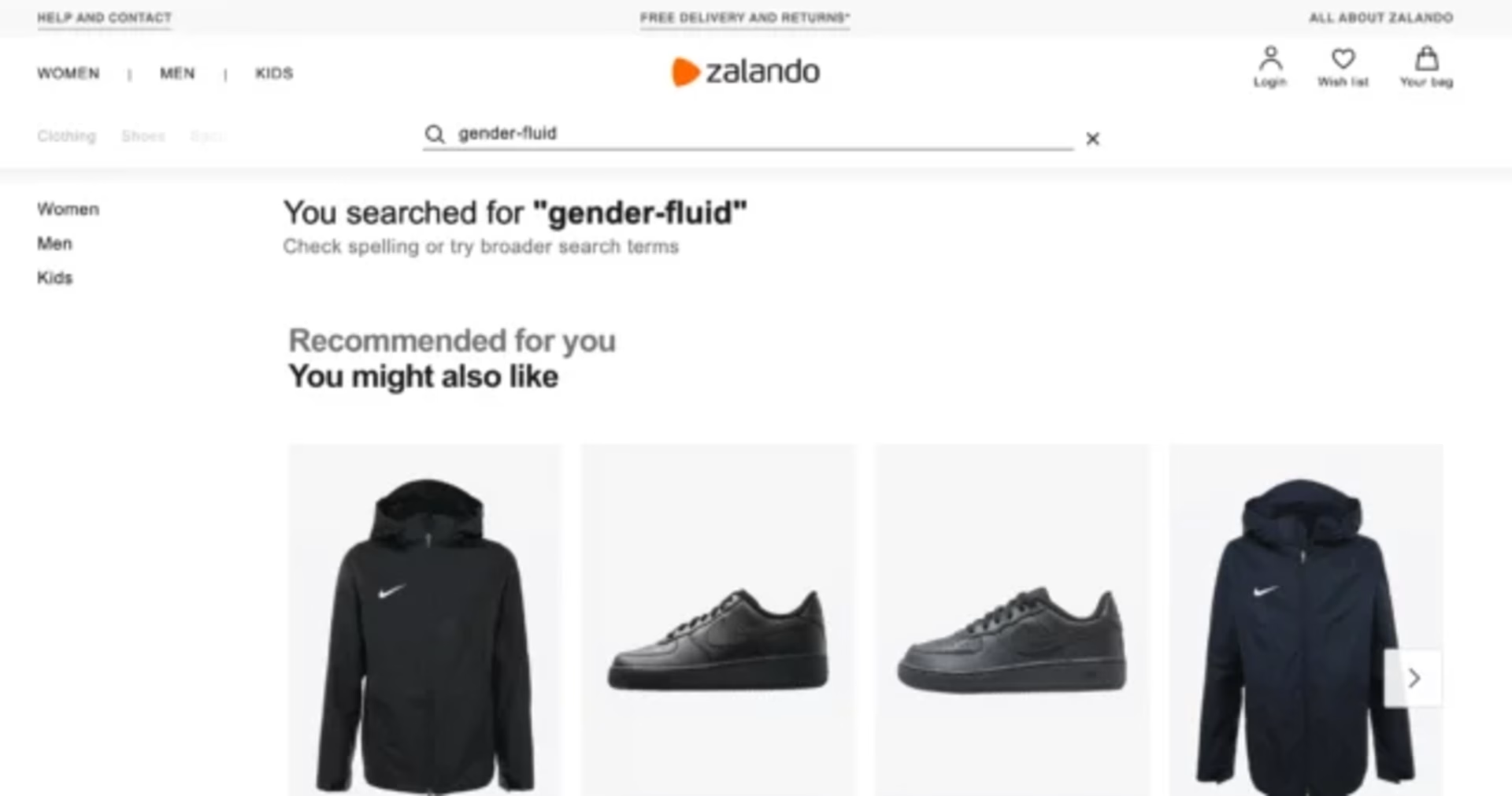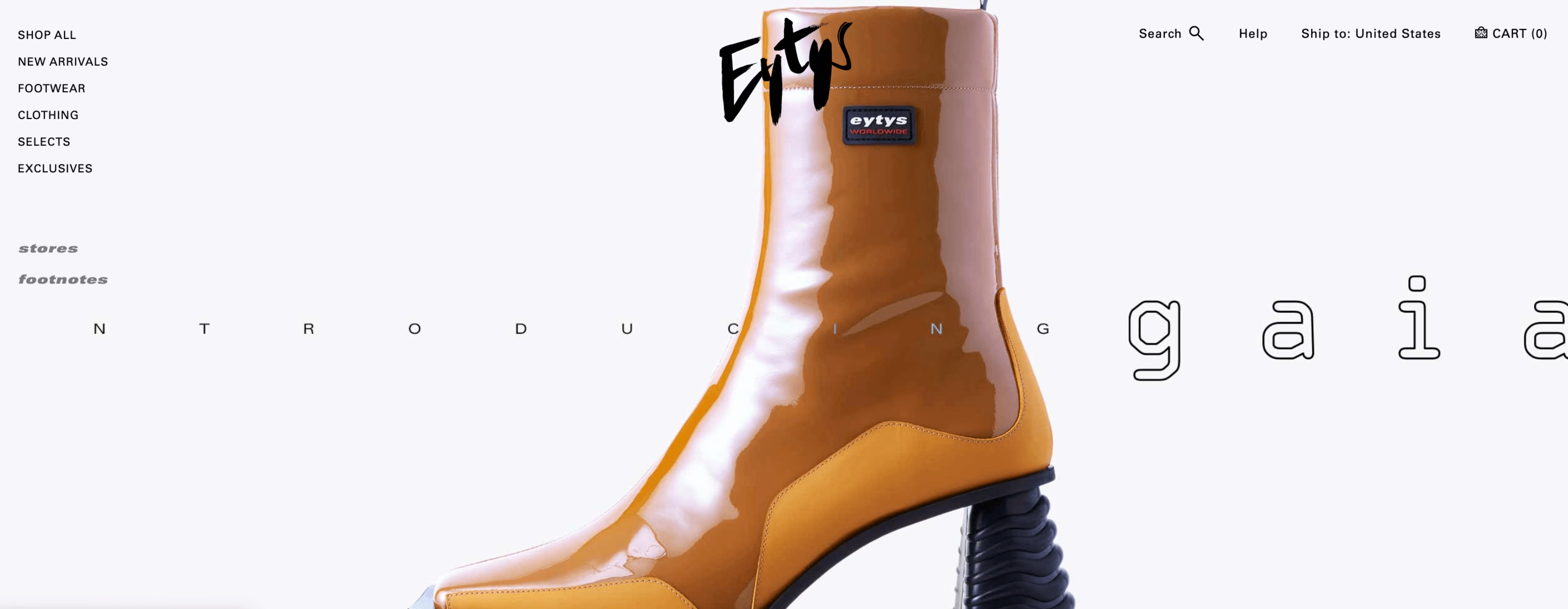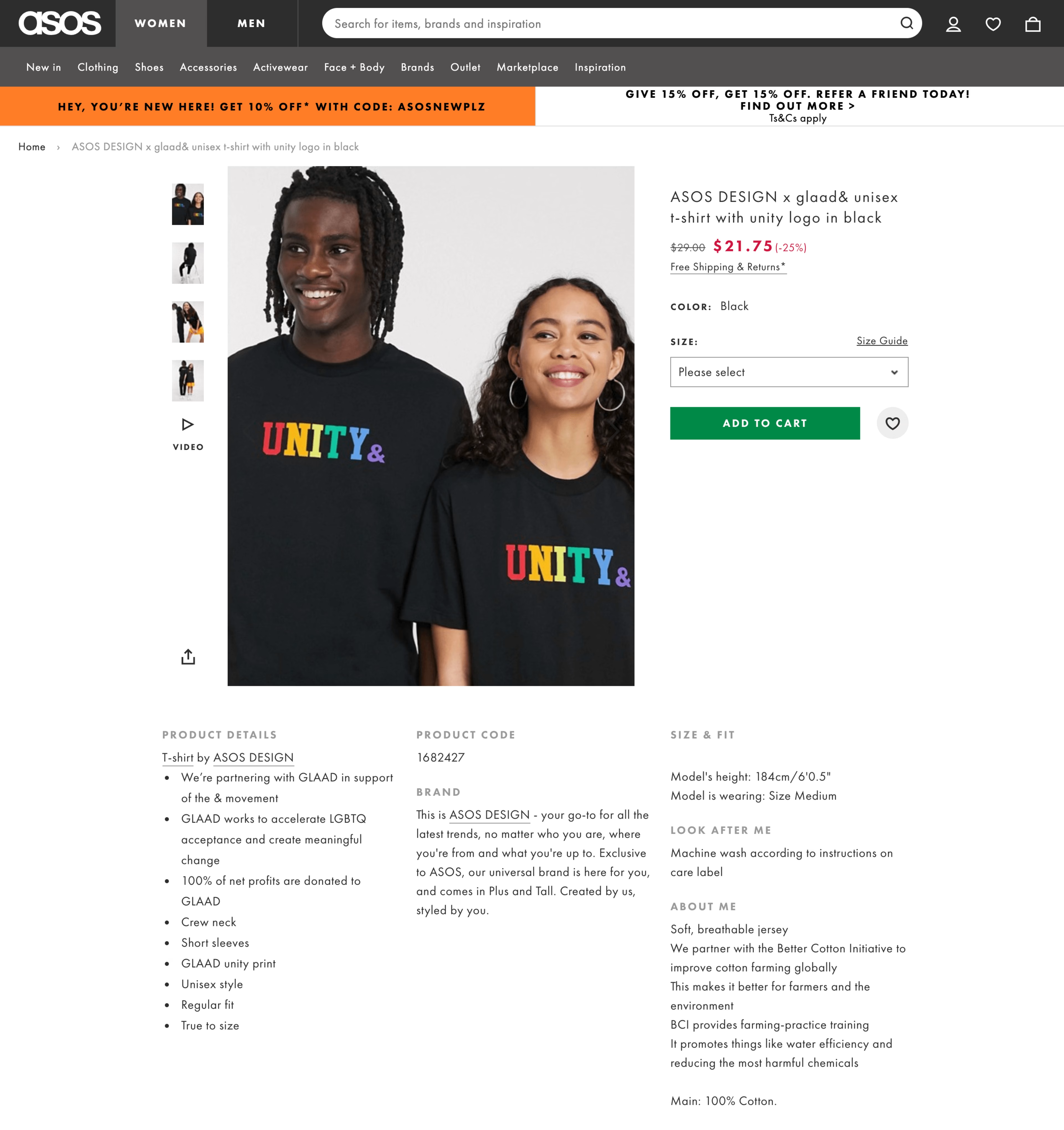While gender-fluid or gender-neutral collections have been around for a while in the fashion space, many businesses are behind the curve on creating digital experiences and products that appeal to gender non-conforming, non-binary, and trans shoppers. Gender-inclusivity and retail haven't always gone hand-in-hand.

At our latest Contentsquare Women in eCommerce event, Alexandra Popova, Sr. Product Owner at Adidas, and Constantine Gavrykov, Global UX Director at Intersport, discussed how brands are challenging industry gender norms, and shared advice on how businesses can build an inclusive digital customer experience, and branch out their offerings to meet the needs of their non-binary consumers:
Breaking Down Traditional Gender Norms
There’s been a major mindset shift in how society defines gender and younger generations are leading this change. Seventy-eight percent of Gen Z consumers agree that gender doesn’t define a person as much as it used to. And more people are comfortable identifying outside of their assigned gender roles — 56% of Gen Zers say they know someone who uses gender-neutral pronouns.
“I believe we are now experiencing another sexual revolution,” said Popova. “Today, the majority of millennials and Gen Z see gender as a spectrum, rather than binary, something that would have been hard to imagine a decade ago. Now, our responsibility as a workplace, business, and part of a community is to reimagine our lives with this new understanding.”
What does this mean for businesses? Many companies, retailers specifically, base their products and services entirely around gender. As younger generations continue to lead the shift in attitudes around gender, this approach risks alienating tomorrow’s shoppers, as well as harming businesses today.
Many younger consumers also expect their preferred brands to take a stance on ethics and social responsibility issues. A recent Deloitte study revealed that 42% of millennials have chosen to do business with companies they believe are having a positive impact on society or the environment, 37% said they have stopped shopping with companies they believe are unethical. This new generation of consumers is demanding change, and businesses that want to stay competitive need to tailor their offerings and practices to embrace the needs of all their customer segments.
“The conversation around gender is changing and a drastic reshaping of gender identity is underway, which will reshape our future,” said Gavrykov. “Gender manifests itself across our businesses, products, marketing, and processes in ways we not thinking about yet, but have the potential to turn off customers who would have otherwise loved to buy our products.”
Certain products, like shoes, clothes, and fragrance, are often more gendered than others. But while brands assume consumers feel more comfortable shopping for products that are designed for their assigned gender, customer behavior might suggest something different. More and more Gen-Zers are ignoring gender categories and buying what they like. In fact, 56% of Gen-Z consumers report they already shop outside of their gender.
How Businesses Can Prepare for a Non-Binary World
Personalization and innovation are key elements in designing an amazing customer experience. But if you are strictly following traditional gender lines, your personalization efforts will automatically exclude those customers who don’t identify as male or female. The good news is that upgrading your approach to be inclusive and to create a more socially responsible brand comes with tremendous opportunity to innovate.
“We can branch out our business by finding niche markets and exploring new territories, which is a very exciting idea. We now have the chance to create products and experiences for a growing body of consumers that no longer buy into the typical definition of gender and the stereotypical binary classification of it,” said Popova.
As millennials and Gen-Zers continue to earn more buying power, businesses need to appeal to their wants and needs. But while many brands may want to go gender-neutral and broaden their customer base, businesses often don’t know where to start. Here’s some practical advice for brands that are committed to delivering a standout customer experience to all their customers:
How Buyer Personas Hurt Inclusive Design
As with every business decision, you must start by having a sophisticated understanding of who is, who might be, and who wants to be your customer, and what those individuals’ goals are. Brands should aim to create products that will resonate with everyone and do their best to ensure no customer is excluded from their brand.
Where companies go wrong, Gavrykov shared, is by oversimplifying their vast customer base. “If you’re aiming to serve thousands or even millions of customers, your solutions need to work across a wide range of human diversity,” said Gavrykov. “We put customers into buckets and segments and then map out the bell curve where the middle represents the average user, the ‘norm,’ and their issues are the ones you design your products to solve. The other 20% of users on opposite sides of the bell curve are outliers and edge cases and their issues are often overlooked and neglected.”
But this other 20% of users can also provide a huge opportunity of untapped revenue for brands. In a space where everything is about personalization, this is an important first step for businesses to consider. Businesses need to get this diversity back into the design process to build more inclusive products and expand their offerings to solve for diverse users issues, not just ones the “average” user is facing.
Gender-Inclusivity and Retail: How to Create a Gender-Neutral Digital Shopping Experience
Traditionally, the layout of retail stores is split up by gender, and in some cases, genders are even assigned to different floors. We’ve inherited this split in our online stores as well. Site navigation, product sizing, images, and descriptions are all bound by gender.
1. Improve Gender-Neutral SEO
If you try to Google gender-neutral clothing, Popova shares, the results aren’t as straightforward as you would think. She said the only results she found were niche gender-fluid brands or gender-inclusive marketing campaigns by big brands and retailers.
Zalando, a German-based clothing retailer, launched its “free to be” brand campaign in 2019, which encouraged customers to use fashion to express their identity, regardless of size, age, gender, or background. Even on the Zalando site, Popova’s search for “gender-fluid” and “gender-neutral” returned no on-site results. She never landed on an actual product.

“While the brand direction and strategy is there, the product proposition is still behind,” said Popova. Brands need to optimize their site content, product descriptions, and keywords to capitalize on users searching for gender-neutral products and surface them relevant results.
2. Adopt Gender-Neutral Website Navigation
When you land on an eCommerce retailer’s website, you are almost immediately faced with gender. Most navigation bars are split into Women, Men, and Kids sections, while almost no brands offer a gender-neutral option. “It’s done this way for a good reason,” said Gavrykov. “It’s how our customers are searching, it’s ingrained in our brand strategy, and it's often how we approach product categorization on the technical side.”
But what about customers who don’t recognize themselves in either of these categories? Your site navigation might be turning them away.

Typically, you only see non-gendered categories on niche gender-fluid clothing sites. For example, Swedish gender-neutral clothing brand Eytys uses category-first navigation and doesn’t break products up by gender. Instead, they jump straight into product categories like “New Arrivals,” “Footwear,” “Clothing,” and more.
3. Embrace Gender Neutral Imagery and Content
Good product photography can convey style, quality, fit, and belonging. Customers want to be able to imagine themselves using and wearing your products and services, but models that don’t look like them can be alienating. To help non-binary shoppers better connect with their products, some companies have opted to use androgynous models, while others choose to have both a man and woman model products. These rather small changes can be instrumental in helping your customers feel represented and seen by your brand.
4. Add More Inclusive Fit Descriptions
The tricky part with gender-neutral clothing is communicating sizing and fit. This again goes back to how deeply gender is interwoven with our retail strategy. Aside from small, medium, large, etc. sizing, our garment sizing is completely different for men and women. Here, Popova referenced a unisex shirt on British online fashion and cosmetic retailer ASOS’s website.

Upon first glance, the product image is inclusive with both a male and female model displayed wearing the t-shirt, but upon further inspection, the product description leaves consumers confused. Under “Size & Fit,” only the male model’s measurements are shared. “There should be unity in how such 2-in-one images are handled. There are two models in this photo so there should be two sets of model measurements presented to the consumer,” said Popova.
When offering gender-neutral clothing, brands need to ensure the model’s dimensions and size are listed or that the product description lists measurements for both men and women. Or, brands need to design dedicated gender-neutral cuts and fits.
----
When it comes to building a more inclusive business model, offering more gender-fluid friendly functionality can help you build an amazing experience for all of your customers. Brands must find the balance between pleasing customers who want to shop with a binary mindset and those who don’t to create an on-site experience that is meaningful regardless of a customer’s gender-identity.
Brands building inclusive design and business strategies can often be divided into two groups: reactive and proactive companies. Brands need to focus on younger generations and their shifting shopping preferences and behaviors in order to adapt and stay relevant.
While doing away with gender entirely might not be a reality for your company, there are still easy ways to help people find your products without changing your overall strategy. Just adopting more gender-neutral SEO practices, landing page copy, and product descriptions can help more people find your products, regardless of their gender identity.
To stay up to date on upcoming Contentsquare Women in eCommerce events, follow the Women in eCommerce LinkedIn Page. Or, to watch the full recording of this session and view other sessions featuring Kathy Ando of Tile and Malvina Courouble-Or of Van Cleef & Arpels, click here.
Lyssa Test is a Senior Content Marketer at Contentsquare with a love for writing and sharing compelling stories.
